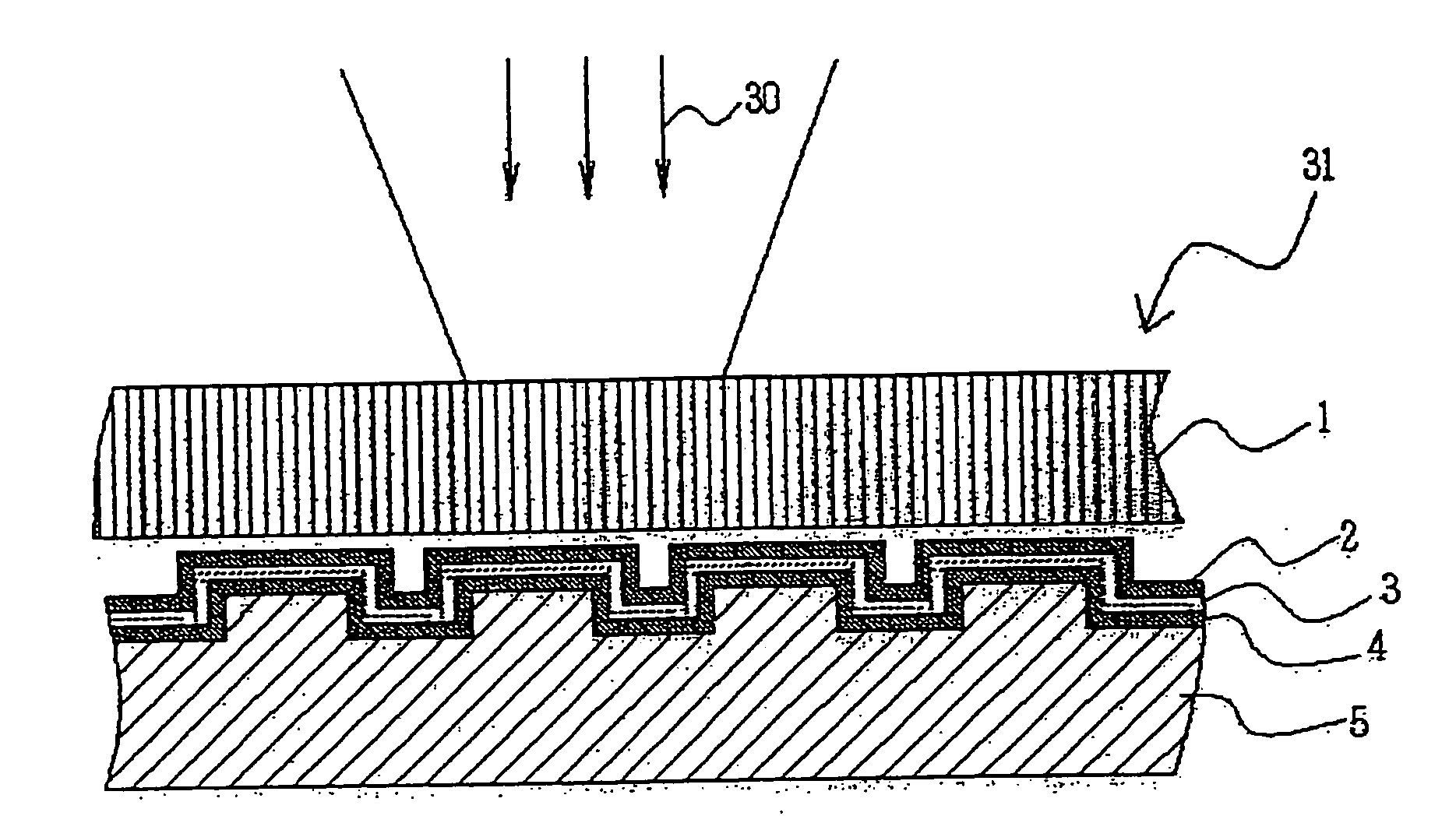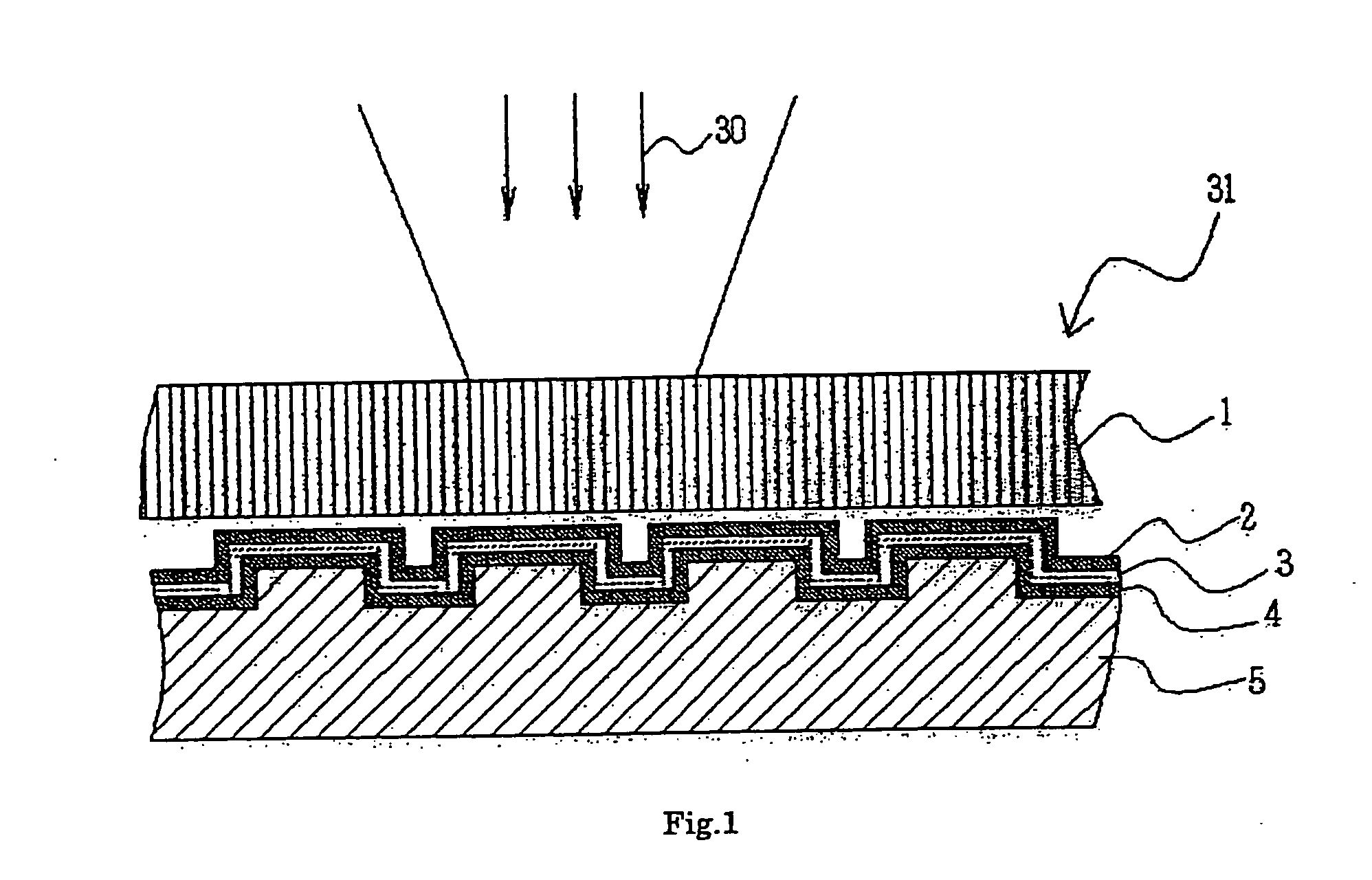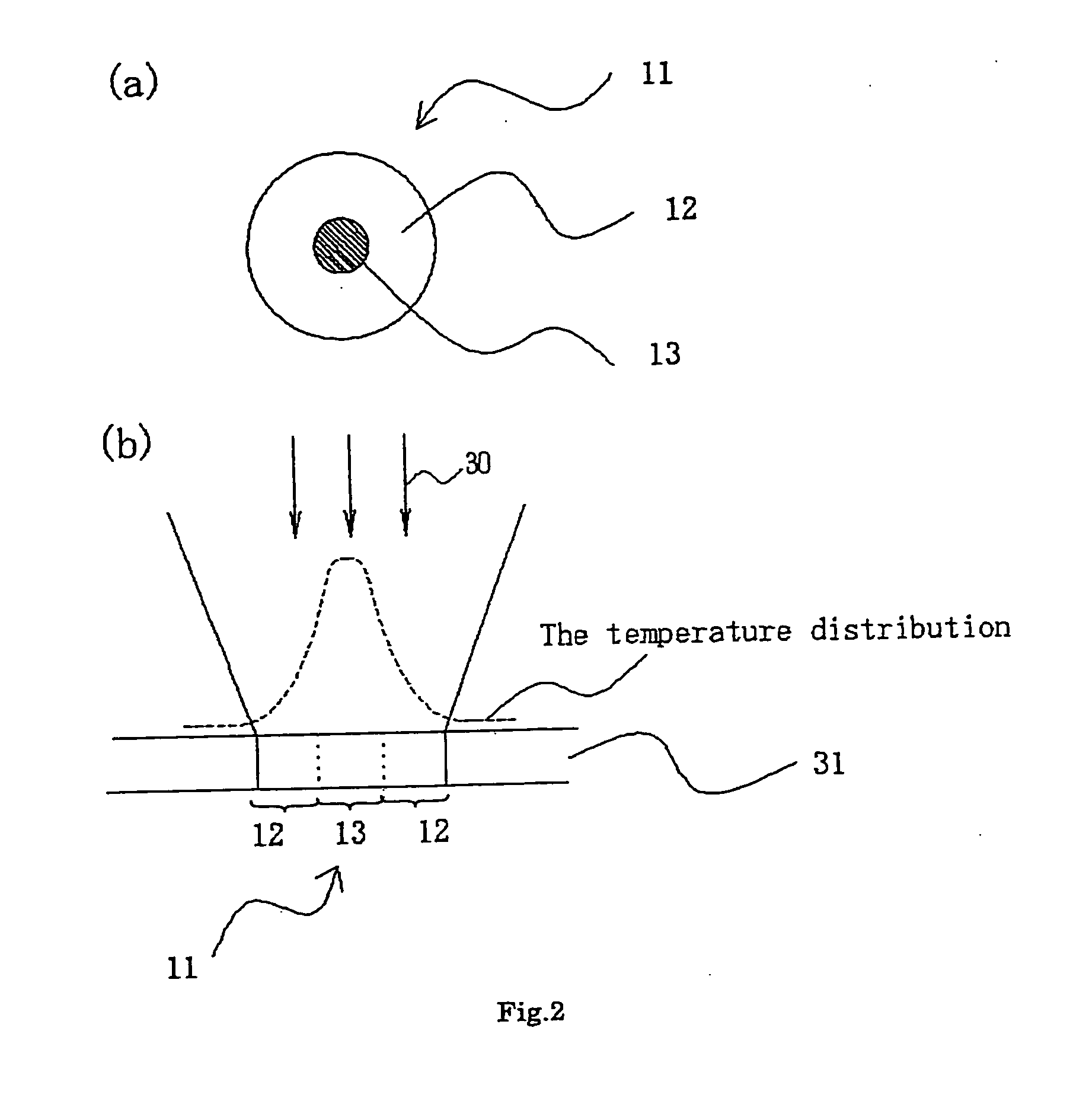Optical data recording medium and method for reproducing recorded data
a technology of optical data and recording medium, which is applied in the direction of optical recording/reproducing/erasing methods, instruments, digital recording, etc., can solve the problems of insufficient resolution limit, difficult to achieve a thin thickness of resin layer, and limit in how thick the reproducing layer is
- Summary
- Abstract
- Description
- Claims
- Application Information
AI Technical Summary
Benefits of technology
Problems solved by technology
Method used
Image
Examples
example 1
[0104]As an Example 1, an optical data recording medium having the following arrangement was produced (hereinafter, referred as “Example 1 disc”). As shown in the FIG. 1, pits creating a non-flat surface are provided on polyolefin-based resin substrate 5 having a 0.5 mm thickness. The pits corresponded to recorded data. On that surface of the polyolefin-based resin substrate 5 on which the pits are formed, an Al layer 4 (30 nm in thickness) used as a reflective layer, as Si layer 4 (50 nm in thickness) used as an light absorption layer, and a ZnO film 2 (225 nm in thickness) used as a reproducing layer were formed in this order. On a top surface of the reproducing layer 2, glass 1 (0.5 mm in thickness) as a cover layer was placed.
[0105]Also, as a Comparative Example, an optical data recording medium with following arrangement was produced (hereinafter referred as “conventional disc”). As shown in FIG. 4, pits creating a non-flat surface were provided on a polyolefin-based resin subs...
example 2
[0112]In Example 2, a material of the reproducing layer was examined.
[0113]An optical data recording medium (hereinafter Example 2 disc) used in Example 2 was identical with the Example 1 disc in the Example 1, except that the reproducing layer of the Example 2 disc was made of, instead of ZnO, SnO2. Correlation between mark lengths for signals, and qualities of the signals was measured for the Example 1 disc and Example 2 disc. The measurement was carried out as in Example 1. That is, the measurement of a C / N (appraisal standard of signal quality) of pits having 0.1 μm through 0.5 μm mark length (pit length) was carried out.
[0114]The results of the measurements of the Example 1 disc and the Example 2 disc are graphed in FIG. 6. In FIG. 6, the solid line is the result of the Example 1 disc, whereas the broken line is the result of the Example 2 disc. In FIG. 6, the horizontal axis shows the pit length, and the vertical axis is OTF (optical transfer function) showing C / N (appraisal s...
PUM
| Property | Measurement | Unit |
|---|---|---|
| depth | aaaaa | aaaaa |
| depth | aaaaa | aaaaa |
| depth | aaaaa | aaaaa |
Abstract
Description
Claims
Application Information
 Login to View More
Login to View More - R&D
- Intellectual Property
- Life Sciences
- Materials
- Tech Scout
- Unparalleled Data Quality
- Higher Quality Content
- 60% Fewer Hallucinations
Browse by: Latest US Patents, China's latest patents, Technical Efficacy Thesaurus, Application Domain, Technology Topic, Popular Technical Reports.
© 2025 PatSnap. All rights reserved.Legal|Privacy policy|Modern Slavery Act Transparency Statement|Sitemap|About US| Contact US: help@patsnap.com



